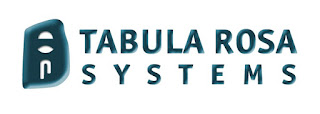From whatis.com
leaf-spine
|
| Leaf-spine
is a two-layer network topology composed of leaf switches and spine switches. Leaf-spine is a two-layer data center network topology that's useful for data centers that experience more east-west network traffic than north-south traffic. The topology is composed of leaf switches (to which servers and storage connect) and spine switches (to which leaf switches connect). Leaf switches mesh into the spine, forming the access layer that delivers network connection points for servers. Every leaf switch in a leaf-spine architecture connects to every switch in the network fabric. No matter which leaf switch a server is connected to, it has to cross the same number of devices every time it connects to another server. (The only exception is when the other server is on the same leaf.) This minimizes latency and bottlenecks because each payload only has to travel to a spine switch and another leaf switch to reach its endpoint. Spine switches have high port density and form the core of the architecture. A leaf-spine topology can be layer 2 or layer 3 depending upon whether the links between the leaf and spine layer will be switched or routed. In a layer 2 leaf-spine design, Transparent Interconnection of Lots of Links or shortest path bridging takes the place of spanning-tree. All hosts are linked to the fabric and offer a loop-free route to their Ethernet MAC address through a shortest-path-first computation. In a layer 3 design, each link is routed. This approach is most efficient when virtual local area networks are sequestered to individual leaf switches or when a network overlay, like VXLAN, is working. |

www.amazon.com/author/paulbabicki
====================================================

Catfishing
From Wikipedia,
the free encyclopedia
Catfishing is a type of deceptive activity where a person creates a
sock puppet
social networking
presence, or fake identity on a social network account,
usually targeting a specific victim for deception.
Catfishing is
often employed for romance scams on
dating websites. Catfishing may be used for financial gain, to compromise a
victim in some way, or simply as a form of trolling or wish fulfillment.
Catfishing
media has been produced, often centering around victims who wish to identify
their catfisher
|
We can be contacted at:
===============================================================In addition to this blog, Netiquette IQ has a website with great assets which are being added to on a regular basis. I have authored the premiere book on Netiquette, “Netiquette IQ - A Comprehensive Guide to Improve, Enhance and Add Power to Your Email". My new book, “You’re Hired! Super Charge Your Email Skills in 60 Minutes. . . And Get That Job!” has just been published and will be followed by a trilogy of books on Netiquette for young people. You can view my profile, reviews of the book and content excerpts at:
www.amazon.com/author/paulbabicki
Anyone who would like to review the book and have it posted on my blog or website, please contact me paul@netiquetteiq.com.
In addition to this blog, I maintain a radio show on BlogtalkRadio and an online newsletter via paper.li.I have established Netiquette discussion groups with Linkedin and Yahoo. I am also a member of the International Business Etiquette and Protocol Group and Minding Manners among others. I regularly consult for the Gerson Lehrman Group, a worldwide network of subject matter experts and I have been contributing to the blogs Everything Email and emailmonday . My work has appeared in numerous publications and I have presented to groups such as The Breakfast Club of NJ and PSG of Mercer County, NJ.
Additionally, I am the president of Tabula Rosa Systems,
a “best of breed” reseller of products for communications, email,
network management software, security products and professional
services. Also, I am the president of Netiquette IQ. We are currently developing an email IQ rating system, Netiquette IQ, which promotes the fundamentals outlined in my book.






